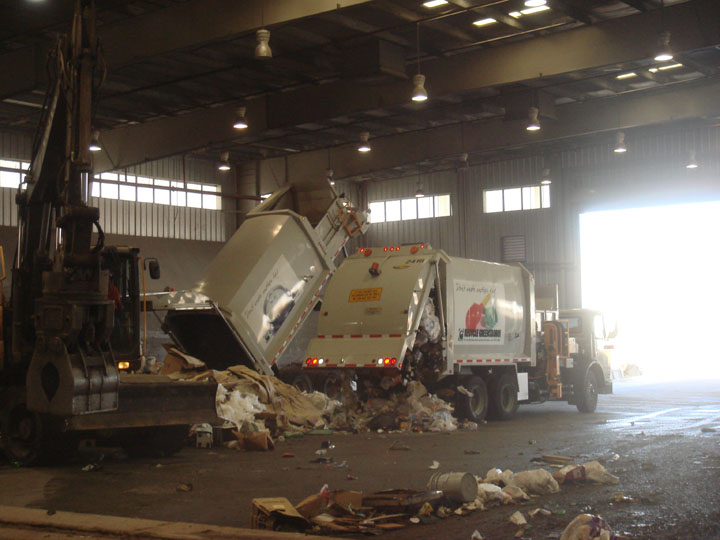I’m formally applying for Bill Thorpe’s Council seat this week.
As I said before (Filling Bill’s Seat, Not His Shoes), serving the community as a Council member is a responsibility I take quite seriously. It is an awesome privilege, an incredible honor, a humbling trust that promises personal satisfaction if one serves to improve the lot of all our residents.
There are many ways to serve ones community: hands-on volunteering, member of an advisory board, working within or creating a community organization, direct advocacy, issues analysis, drumming up support via the local media, etc. Some folks enjoy and are quite effective working behind the scenes. Others pursue solutions to their own neighborhood’s problems. Others work to achieve specific goals – better bicycle access, open space preservation, Bolin Creek’s restoration – that impact the wider community. Some press our government to be better, set an example whether as proponents of equal rights for all or in the conduct of our law enforcement.
Though lately my efforts have mostly fallen more to analysis, outreach, organization and advocacy – I’ve worked with a variety of folks in a variety of ways to address a broad spectrum of community issues these last seven years. And though I haven’t always been successful, I have, I hope, helped move our community forward to some measurable degree.
Council has incorporated my contributions on a variety of issues – preserving the Lincoln Arts Center, Downtown WIFI, environmental metrics for Carolina North, online video of Council meetings, cost reductions, character of affordable housing, economic development, budgeting for hazardous waste removal, etc. – why, then, not continue working issues from the “outside”?
One advantage of having “a seat at the table” is staff support.
As you might expect, with a steady flow of information and thoughtful assistance from our Town’s staff those 30 or more hours a week I currently spend researching and analyzing issues can be utilized more efficiently. On some issues, like Dr. Owens on the Carolina North development agreement process or Amy’s on the application process (see below), I’ve had no difficulty in getting rapid, detailed responses.
On others, like my quest for detailed public records documenting our Town’s fuel, water and electricity consumption, almost four years have passed with no progress. I expect that backlog, and others, to be resolved as a sitting member of Council.
Another advantage is being able to contribute directly at the policy meetings I frequently attend.
For instance, at yesterday’s (Oct. 22nd) Carolina North development agreement meeting, UNC’s proposed landfill gas recovery project (LFG) came up as an issue. There was some confusion concerning the impact of this particular project on the Carolina North plan.
I attended UNC’s presentation last week (more on that soon), and knew what the specific proposal included: gas lines from the existing landfill on Eubanks supplying methane to a 1 mega-watt (Mw) generator at the old Duke Energy site whose output was going to be used to supply UNC’s Airport Drive facility (which currently consumes 1.2Mw daily). As a Council member, I could have quickly brought my colleagues up-to-speed. Instead of meandering through misconceptions, the Council could have focused on what I think is a core issue in developing the Carolina North development agreement: how will out-parcels that will support Carolina North’s development, like the old Duke Energy facility, be incorporated under the provisions of the agreement?
Council’s workload over the next seven months is daunting. Juggling Carolina North and what promises to be the most critical budget process of the last couple decades is work enough, but those are just a few of many issues hurtling forward. Economic development, Downtown’s revitalization, a slew of moderate to large-scale developments, facility expansions, housing ordinances – a whole panoply of public business mundane to game-changing faces the next Council member.
Even with a seat at the table, to effectively discharge the duties of Council member at a level our community deserves over these next six or seven months will take a concentrated effort that I think most citizens would be surprised by.
Laurin Easthom isn’t kidding about 11lb. meeting agendas. Matt Czajkowski wasn’t joking about meeting until 1am.
I did a quick check of the scheduled official Council meetings from Nov. 11th (the date the Council set to select a new member) until June 22nd (the date the Town and UNC set to finish the Carolina North agreement): 30 or more. As Matt and Lauren both recently noted, the workload has increased to the point that meetings go 5 or more hours.
With the additional Carolina North related informational/community outreach meetings scheduled by either the Town or UNC’s administration (including UNC-BOT/Orange County BOCC meetings), there is another 8 (as of Oct. 23rd).
I am one applicant that will come prepared to be, as Council member Laurin Easthom says, “proactive…on the council” and “have areas that they really want to work on making changes and spend extra time on those issues that are important to them”.
I have the advantage in that the Council should have a fairly good grasp of the portfolio of issues I wish to work on (more on that portfolio in my formal application). Common themes – improving our Town’s budget and budgeting process, extending our Town’s community outreach efforts, using technology more effectively to drive cost out of and improving delivery of Town services, working along-side UNC to make Carolina North a “win-win” proposition for both our community and the University – have been well-established over the last six years.
If I add in all the advisory boards and staff groups (like the internal technology steering committee) I would like to be appointed to as Council liaison, the number of meetings jumps to 76. All together, considering both time spent preparing and meeting, in order to diligently perform my civic duties at a level I believe this community requires, I will spend more than 280 hours over the next 7 months, or more than an hour a day on Town business.
Of course, that is my commitment to the community. Other possible applicants might not want to invest that much time , wish to involve themselves so broadly or obligate themselves as deeply.
Finally, the most significant reason to seek a seat is the possibility of directly influencing and deciding the direction our Town moves.
There is a ton of work to be done over the next seven months. As a Council member, someone with a “seat at the table”, I will focus on the many tasks at hand. I don’t expect to create major new initiatives over those seven months. I do expect to pitch in, fill in the gaps,work hard to shape and refine effective policy,keep our citizens aware and involved as issues progress and apply my expertise as a former corporate technical and information officer to make sure we continue to deliver quality service at a price our community can afford.
I also fully know that I will be one among nine other committed colleagues. Their viewpoints don’t always mesh with mine – and that, I believe, is the strength I will bring to this Council. Delay is not our friend but neither is the lack of informed deliberation.
Sometimes, in the pursuit of “cohesiveness”, our citizens are left behind. I am frequently asked how a particular policy was adopted, how a particular decision arrived at – questions that arise because the give-and-take necessary for shaking a policy out – making sure it is viable – is not always readily apparent. Not all issues demand debate but our citizens must be confident that, when necessary, debate – even public debate – will be embraced.
So, little time, if any, to start new major initiatives. Plenty of work without revisiting the past. Prepared, experienced and ready-to-roll on Carolina North, the budget and a passel of other key issues. Incredible opportunity to contribute effectively and directly to the major game-changing projects. Exciting times to be part of Chapel Hill’s leadership.
Plenty of reasons to apply.
Amy Harvey, from the Clerk’s office, sent me this further explanation of the selection process. Five to ten minutes sounds like a long time but I’m sure I’ll have no problem filling them up ;-)!
The Council will receive brief remarks from applicants at a Special Meeting on Monday, November 3, 2008 at 7 p.m. in the Council Chamber at Town Hall.
Applicants should be present at 7 p.m. and will have a 5-10-minute time limit to make their presentation. Time for presentations will be limited based on the number of candidates; it is anticipated that the time for each presentation will be not less than five minutes per candidate and not more than ten minutes per candidate.
Applicants should submit electronic presentations (e.g. powerpoint) by 10 a.m. on Monday, November 3rd. Powerpoint presentations can be emailed to the Town Clerk’s office at clerk@townofchapelhill.org
This meeting will air live on cable television on Chapel Hill Government Channel 18 and by streaming video on the Town website at www.townofchapelhill.org.
Applications are due by 5 p.m. on Friday, October 31 and will then be forwarded to the Council.
Sabrina M. Oliver, CMC
Communications and Public Affairs Director/Town Clerk



